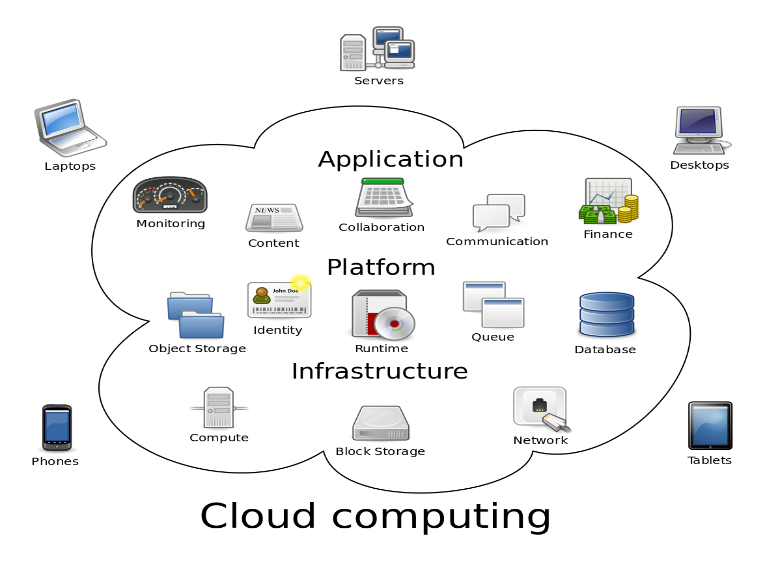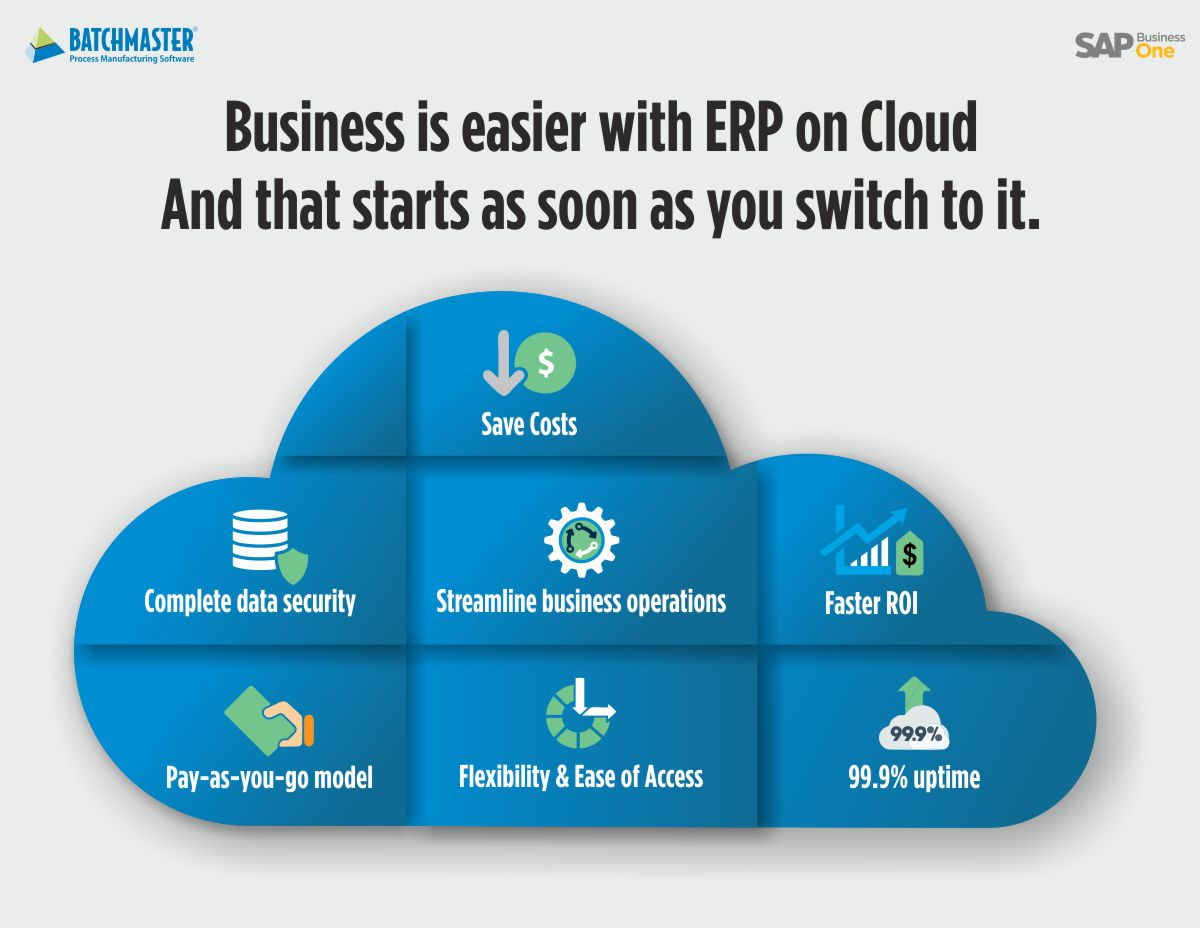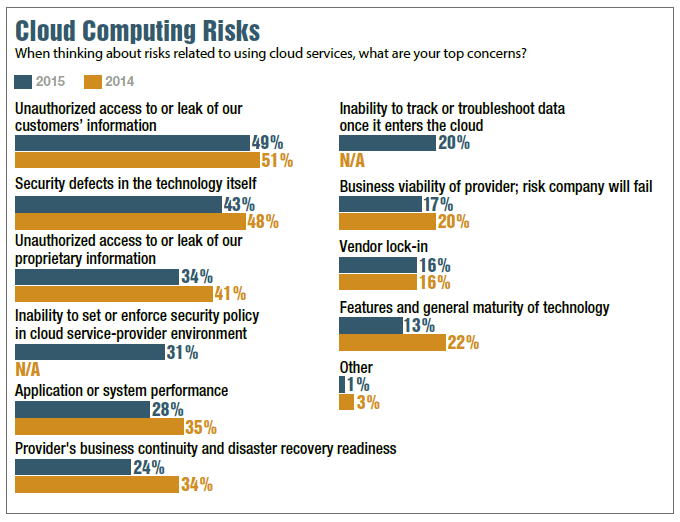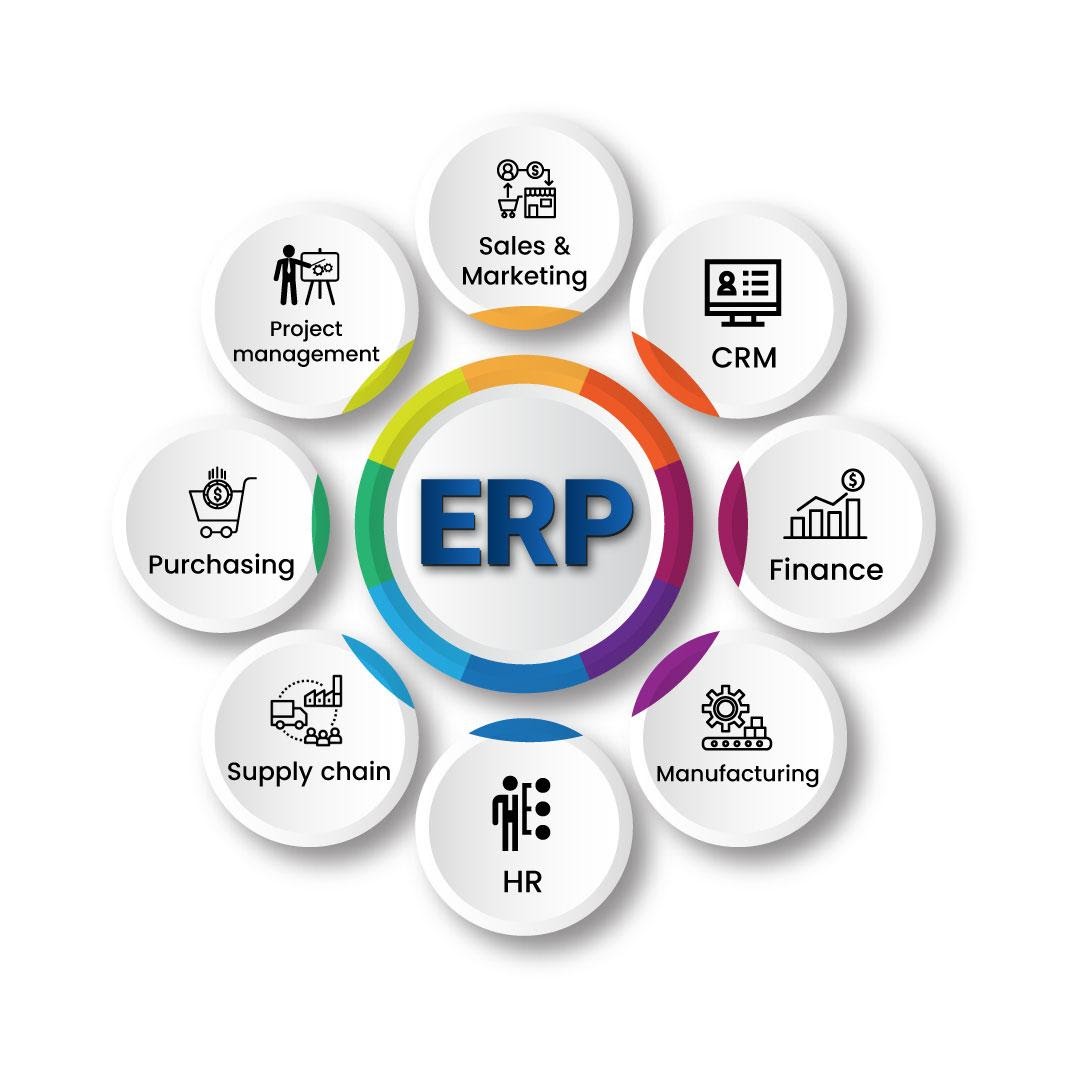Cloud Computing Essay: Cost-Based Database for e-Commerce
Question
Task
You are required to write a cloud computing essay analyzing the cost-based database for the E-Commerce Online Application.
Answer
Introduction and Purpose
This cloud computing essay aims to analyze the cost-based database for the E-Commerce Online Application. E-Commerce has become prevalent nowadays and gained popularity in the business world due to its preferences to a large customer group. The term E-commerce can be defined as sharing business-related data, forming and maintaining business relations, and carrying out business transactional aspects through computer and the internet without paper documentation and manual recording. This cloud computing essay will focus on explaining the role and contribution of the cost database application used in the E-commerce process within an Enterprise system. In this respect, the concept of cloud computing will be discussed to have a better understanding of the topic. This whole procedure is conducted through the internet and in exchange for payment of some sort. This system has reduced the creation and maintenance cost of the enterprises relating to having their own. It framework by providing them their required services in exchange for money. Thus this system of cloud computing has gained significance in today's business world.
The cloud computing essay will include explanations of the key aspects of the topic. It will also provide a critical review of the topic with a synthesis based on the research work. In the concluding portion, the cloud computing essay will provide a brief sum-up of the entire paper along with a reflection report based on the researched work.
Cost Database in Cloud Computing
What are the key aspects related to the case scenario explored in the cloud computing essay?
In this section, the key aspects related to the cost database in cloud computing will be assessed. There are three aspects of E-commerce: E - Market, E - Data Exchange, and Online Trade (Kwilinski et al. 2019). Previously most of the business organizations preferred to use ERP systems manually for maintaining the common database. But nowadays the scenario has changed and most of the enterprises opted for the E-Commerce business to reach out to global business and customers virtually. The concept of manual ERP systems has also transformed. Today the majority of the enterprises preferred and applied cloud computing systems in their E-commerce operations. So the companies opted Cloud ERP System which is a cost data-based system that functions through the internet (Jain & Sharma, 2016). This type of system has fewer upfront costs and provides enterprises to operate any critical application of their organization from any location. The concept of cloud computing is very significant in the context of studying Ecommerce. This is the system by which the delivery is conducted according to the demand from working online services (Diaby & Rad, 2017). This type of system gained popularity because the system has the efficiency to evaluate huge amounts of data without investing a single penny for purchasing hardware. The system has been applied by most of the organizations over the years because of its flexible nature, user-friendly feature and, low cost of setting up.

Figure 1: Cloud computing-based ERP model
Source: (Outsourcing pundit, 2019)
The benefits of having such a system is a very significant factor in using it as a part of enterprise activities. The most important attribute of this system is that it helps the organization to conduct the multiple complex aspects of business within one integrated system from any location. The system enables rapid, simple, and cheap deployment without having the requirement of any infrastructure (Zadeh et al. 2018). Lastly this system enables getting services in exchange for the subscription which is very convenient for the enterprises as most of them opted for the monthly subscription which helps them to manage their budget as it is a less cost consumption process.
Critical Review
This section of the cloud computing essay will deal with the evaluation of the critical analysis in favor of and against the given topic. This critical review will help to understand how far the implementation of the topic in the business world is relevant and successful. This critical analysis will contain literature reviews. This review will help to accomplish the purpose of choosing such a topic.
According to Tongsuksai et al. (2019), the ERP system will include an integrated set of modules containing the operational aspects such as costing, finance management, HR management, etc. The traditional framework of the ERP system has certain lacking areas. The traditional framework is not convenient relating to its remote accessibility. There is a lack of flexibility and reliable features as the system is not implemented in real-time. Moreover, the traditional framework is prone to failures and needs a sophisticated structure within the organization that can only be operated if there is a complete understanding of the hardware and the software related to it. This factor fosters the requirement of the cloud ERP system for the operational purpose of the recent enterprises. This system implements the ICT concept virtually with the pooling of dynamic configurations. The adaptation of this system can be categorized into two groups - individual and organisational. The former is based on the doctrine of The Unified Theory of Acceptance and Use of Technology Framework (UTAUT). Whereas the latter group work on the Technology Organisation Environment (TOE) and Diffusion of Innovation (DOI) Structure which is used to analyze the ICT resources. Among them, the TOE model is implemented in the cloud computing ERP system widely whereas the UTAUT model is used to evaluate the traditional model. But TOE is a generic model and is well implemented with a substitute model like the UTAUT model which has a more comprehensive framework.

Figure 2: Benefits of Cloud ERP System
Source: (Batchmaster, 2020)
The cloud ERP system still needs a standard framework of rules and regulations which is required to operate the system more proficiently. According to Abd Elmonem et al. (2016), the system provides a varied range of ERP solutions that helps to accomplish most of the operational requirements of an enterprise. The system functions can be customized in the application as per the organizational needs. The system enables revision and up-gradation which allows the organization to revise their set up and be aware of the latest incorporated features that are available in the latest version. The system provides backup and restores options that prevent any data from being discarded or eliminated for future use. The restore feature also helps the enterprise to manage any unlike or disaster situation in the operational aspects. The system has enabled the smooth functioning of sales between customers and enterprises. In case of any issue or problem, artificial intelligence in cloud computing provides automatic solutions that reduce the time and effort of the organizations in conflict management in the case of the E-commerce sector. The system allows their potential purchaser to opt for free trials first before choosing the particular set up. The system is very effective for those enterprises which enlarge their scale from time to time. The flexible nature of the system enables the enterprise to apply it in the changing of size, scale, and time of their business operations.
In the context of critical analysis, the implementation of the Cloud ERP system has also been argued on its limitations and drawbacks. This limitation needs to be analyzed for understanding the risk or challenges the enterprises are exposed to in implementing this system.
According to Gupta et al. (2017), the system despite being used extensively nowadays has certain drawbacks that accelerate the risks for the enterprises in different aspects. The most crucial and known risk is the security issues relating to the system. According to the review the security risk is seen most commonly in the operational aspects of large enterprises and is a real challenge for those organizations to tackle those risks. The organizations cannot rely on the system relating to secured data maintenance as there is no organizational control over the security aspects of the system. Moreover, the expenses of running this software for a longer period are also perceived as expensive as the rate of the monthly subscription increases day by day which is cost bearing than the one-time capital investment of the traditional setup. The system is also liable to issues that will foster performance and strategic challenges for an enterprise. The system has not enough scope for customization which in many cases hinders the operational requirements of an enterprise.
According to Algarni & Alsanad (2018), the concern of other data security is one of the main concerns for the organizations that are adopting the Cloud ERP system. The security of data can only be guaranteed if there are a strong authorization and authentication aspect which lacks in the Cloud ERP system. The service provider sells a high rate of insecure aspects in data to grow the attraction of the organization for the services. The nature of the integration in the context of the Cloud ERP is that of hybrid. Thus with complex integration and a large volume of data exchange, the system became vulnerable for the chances of data breaches or data loss, or hacking. A most contemporary report of Gartner states that large enterprises do not completely want to depend on cloud technology for keeping their database. Thus the service provider considering the situation now focuses on developing this system which will provide a strong security setup and controlling panel which can reduce the risk of the data breaches and other security issues.
The different approaches in literature can be seen to signify both the positive and the negative aspects of the implementation and consider both the aspects equally important for having complete knowledge about the system.
Synthesis
From the above arguments in the context of the literature review within this cloud computing essay, it can be seen that the cloud computing ERP system is one of the popular options adopted by the majority of the enterprises for several unique features. The system has made the virtual form of business easy and effortless and also helps the enterprises to run their global business smoothly by getting access to other organizational partners and customers under an integrated system. The system also has induced risk-free management of the whole business including all its aspects from any location. The flexibility, easy accessibility, and integration of the system have made it attractive in front of most of the organizations to adopt it for operational functioning. This system has also laid the business to be progressive in terms of technological advancement as the E-commerce business has now become one of the strongest pillars of global business. The nature of the virtual business sector is so complex that the organization cannot afford to have its own IT set up of their own. Thus, in that case, the easy option is the cloud ERP system which is provided by the third party in exchange for certain subscription charges. This form of ERP system has enabled Small scale enterprises to extend their scale to global business.

Figure 3: Cloud computing risks
Source: (Calyptix, 2016)
But the above arguments provided in this cloud computing essay also showed that this modernized technologically advanced system has some serious limitations which led the organizations exposed to different kinds of risks and challenges. The system has a major problem with data security. For any organization, the confidentiality and safety of their data are one of the significant concerns and in this respect, the system has proved its deficiency. The system has not satisfied the organizational authorities completely as its data security system lacks the controlling aspect. Moreover, the hybrid integration and high and large exchange of data make the system very open to hackers and that is what concerned most of the organization. The lack of trust is also because the system is run by a third-party provider who in many times intentionally heightens the level of openness of the data accessibility to attract more and more organizations for adopting their service. Thus the third-party service providers do not seem to be trustworthy as they tend to compromise the data security aspect for gaining business advantages. Thus, the system service provider must consider certain points for developing the system.

Figure 4: ERP system
Source: (Onukeep, 2019)
Firstly the system must have some specific guidelines and policies that the users are bound to accept which will contain the rules and limitations the user must follow while operating the system. Secondly, there should be a strong data security framework that will store the verified data with exclusive confidentiality. The security system must have the anti-hacking set up which can recognize and prevent hackers from doing any, unlike work. Lastly, all the cloud ERP systems must have a common body or organization that will verify their set up and will provide them the authentication and authorization to operate the system for organizational functioning. In another way, it can be said that there needs to have some sort of license for this system accessibility.
Conclusion and Reflection
Conclusion
This cloud computing essay is based on the implementation of the Cloud-based cost data-based system or the ERP system in organizational functioning. In this regard, there are short definitions of the E-Commerce business and cloud computing in the introductory part. In the next part the factors for which the organizations adopted this system discarding the traditional one have been analyzed where the comparative assessment of both the traditional and the modern approach has been explained. The next part deals with the argument in the context of the literature review related to this topic. In this section, it is seen that most of the scholars have signified the positive and the negative aspect of the system for a proper understanding of how the system works and what are the challenges the organization faces who operate this system. Based on these arguments the next section of the cloud computing essay is a brief explanation of the synthesis of the researched topic which also contains certain recommendations to improve the system for better and risk-free performance.
Reflection
Based on the research work I am preparing this report which contains five different aspects:
The research topic of my cloud computing essay is based on the implementation of the cost-based application in the E-Commerce business. In this context, the cloud computing ERP system has been analyzed and its application and role have been evaluated.
I feel that the cloud computing ERP system is a relevant technology for the E-commerce sector as it fosters deployment and flexibility which enable even small enterprises to carry on global business by staying in a specific location and also getting access to more customer and collaborators around the globe through a single integrated system.
While going through the critical analysis of the method it can be seen that the system has some major limitations which despite its popularity and usefulness cannot satisfy the enterprises completely. The service provider must consider both the positive and negative aspects with equal concern so that they can develop the system for proficient performance. It can be said that the cloud computing technology and its application through the ERP system is very much effective in the virtual business sector only if it is free from all sorts of risks and limitations.
Action considering the drawback points of the system the service providers need to develop the system which will operate on fixed guidelines and policies, having proper authentication or authorization by some fixed body who will verify the security aspects of the system and build a strong data security system with backup and restore features that can minimize any issues related to the data breach. The concluding section contains a reflective report on the researched work.
References
Abd Elmonem, M. A., Nasr, E. S., & Geith, M. H. (2016). Benefits and challenges of cloud ERP systems–a systematic literature review. Future Computing and Informatics Journal, 1(1-2), 1-9.
Algarni, M. A., & Alsanad, A. A. (2018). Cloud Computing and ERP: An Academic. Batchmaster. (2020). Retrieved 21 September 2020, from https://www.batchmaster.co.in/images/business-easier-with-erp-on-cloud-infographic.jpg
Calyptix. (2016). Retrieved 21 September 2020, from https://www.google.com/url?sa=i&url=https%3A%2F%2Fwww.calyptix.com%2Fresearch-2%2Ftop-5-risks-of-cloud-computing%2F&psig=AOvVaw3wCPW501tfrmRY1tmo__dq&ust=1600780929825000&source=images&cd=
vfe&ved=0CAIQjRxqFwoTCNjen-6r-usCFQAAAAAdAAAAABAO
Diaby, T., & Rad, B. B. (2017). Cloud computing: a review of the concepts and deployment models. International Journal of Information Technology and Computer Science, 9(6), 50-58.
Gupta, S., Misra, S. C., Singh, A., Kumar, V., & Kumar, U. (2017). Identification of challenges and their ranking in the implementation of cloud ERP. Cloud computing essay International Journal of Quality & Reliability Management.
Jain, D., & Sharma, Y. (2016). Cloud computing with ERP-A pushes a business towards higher efficiency. Annaul Research Journal of SCMS Pune, 4.
Kwilinski, A., Volynets, R., Berdnik, I., Holovko, M., & Berzin, P. (2019). E-Commerce: Concept and Legal Regulation in Modern Economic Conditions. Journal of Legal, Ethical and Regulatory Issues, 22, 1-6.
Onukeep. (2019). What is an ERP System?. Retrieved 21 September 2020, from https://www.onupkeep.com/answers/maintenance-software/what-is-an-erp-system/
Outsourcing pundit. (2019). Cloud Based ERP System- The Emerging Future. Retrieved 21 September 2020, from https://outsourcingpundit.com/cloud-based-erp-system-the-emerging-future/
Tongsuksai, S., Mathrani, S., & Taskin, N. (2019). A Framework to Assess the Critical Success Factors for Cloud Enterprise Resource Planning Adoption in Small and Medium-sized Enterprises. In CONF-IRM (p. 7).
Zadeh, A. H., Akinyemi, B. A., Jeyaraj, A., & Zolbanin, H. M. (2018). Cloud ERP Systems for Small-and-Medium Enterprises: A Case Study in the Food Industry. Journal of Cases on Information Technology (JCIT), 20(4), 53-70.












